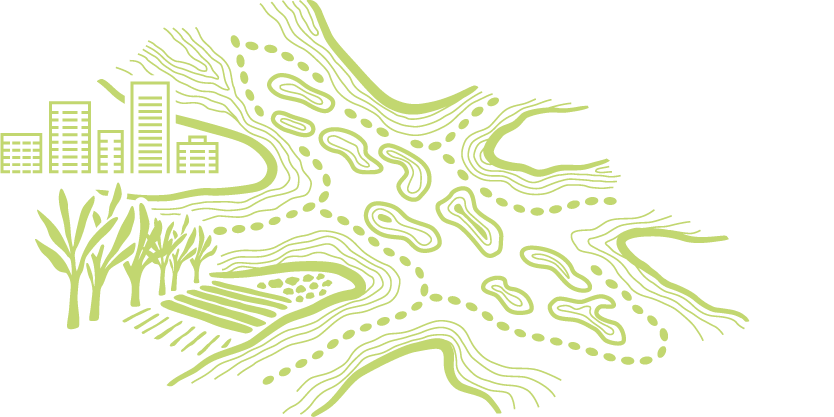Of the four main factors influencing the Region (climate change, coastal development, land-based runoff and direct use), climate change remains the greatest issue facing the Region’s heritage values. The effects of climate change on the Reef’s natural values are assessed in Sections 6.3 and 7.3.9.
The Reef’s outstanding universal value and the connection of Traditional Owners with the natural environment are highly vulnerable to the factors influencing the Region. The identity of First Nations peoples is embedded in their Sea Country, moving beyond the physical dimensions of landscapes and seascapes; they are spiritscapes.1114 Pressures exerted on the Region’s natural heritage value (ecological and biological processes and habitats assessed in Chapters 2 and 3) equally apply pressure on the Region’s Indigenous heritage value (Section 4.3). Therefore, changes in the Region’s habitats, species and ecosystem health may have far-reaching consequences on the natural and Indigenous heritage values of the Region.
Projections of intensified ocean warming (Section 6.3.1), and population growth (Section 6.2.2) will continue to place pressure on the Region’s heritage values. Impacts of climate change threats (such as ocean acidification, altered ocean currents and sea temperature increase) on intangible heritage are likely to occur, although this remains a knowledge gap. Changes to the ecosystem due to altered weather patterns are inevitable under predicted climate change scenarios, and changes are already being observed.933 Altered weather patterns and sea-level rise are likely to accelerate impacts on tangible heritage sites through physical weathering, erosion and inundation.1952,1953 Nutrient, sediment and terrestrial runoff may also affect tangible underwater heritage sites by altering physical and chemical processes and potentially accelerating degradation rates.1954
The heightened level of vulnerability has seen managers embrace dynamic approaches to Reef and island interventions in the past 5 years. However, the onset and severity of some climate-induced impacts, makes planning difficult and complicates the assessment of potential benefits of some Reef interventions.1955 The effect of interventions on Indigenous heritage values is a knowledge gap.1956 Greater emphasis has also been placed on adaptation strategies and analysis of policy frameworks at a place-based level.1956,1957
Contemporary publications identify that, while Indigenous heritage values continue to be vulnerable to factors influencing the Region, First Nations peoples have demonstrated a capacity to adapt to a changing climate and other external pressures for thousands of years. An emphasis on ‘old ways to new days’ will act to reduce and mitigate the risk of fragmentation of cultural knowledge and support resilience in the face of climate change.1958,1959,1960 For example, the Yuku-Baja-Muliku people, in collaboration with western climate change scientists, developed a process to assess the vulnerability of their Land and Sea Country near Archer Point in North Queensland to climate change using both Indigenous Knowledge and western science.933 Through the Traditional Owner-centric assessment, the observations made by the Yuku-Baja-Muliku people on Land and Sea Country could be related to climate change impacts and to how those impacts are affecting their management efforts and customary activities.
Indigenous heritage values are vulnerable to multiple effects relating to foundational capacity gaps (Appendix 6), specifically uneven capacities and power dynamics that exist within society and Reef management.1958 In 2019, foundational capacity gaps were included as a threat to the Region’s heritage values in the Outlook Report for the first time. Since then, additional local and international studies and partnership initiatives have drawn attention to the improvements required in the enabling context for building capacity and self-agency of First Nations people (noting the disparity in the starting point). Self-agency and an enabling environment are essential to reducing foundational capacity gaps and the fragmentation of cultural knowledge.1114,1961,1962,1963 Climate adaptation planning to reduce vulnerabilities and strengthen the resilience of First Nations peoples and Indigenous heritage values should involve mobilising cultural institutions, strengthening cultural practices, incorporating cultural knowledge and supporting decolonising.1406,1960


